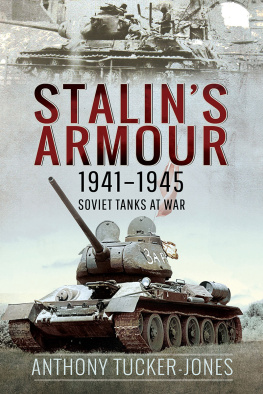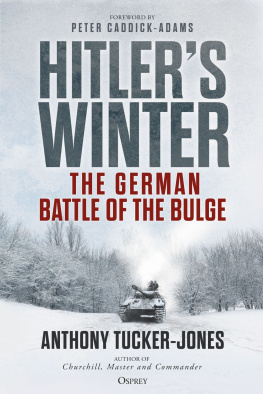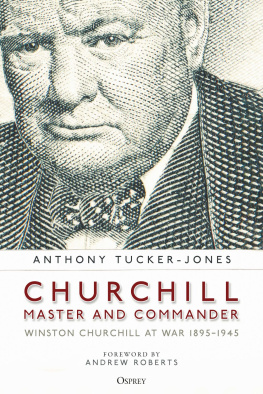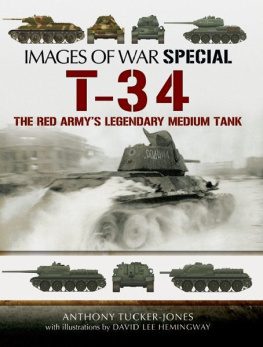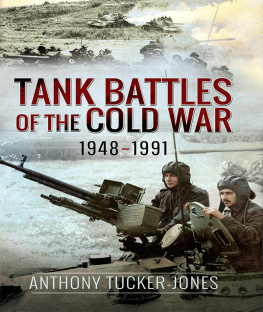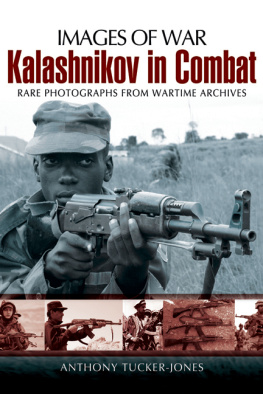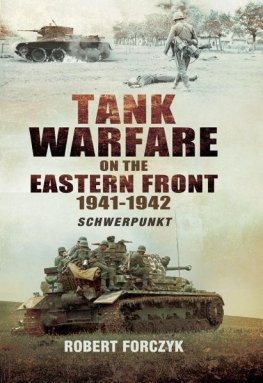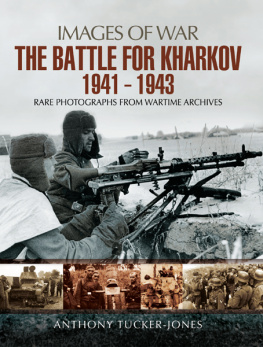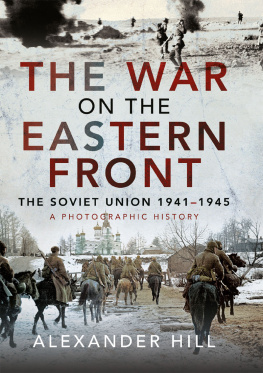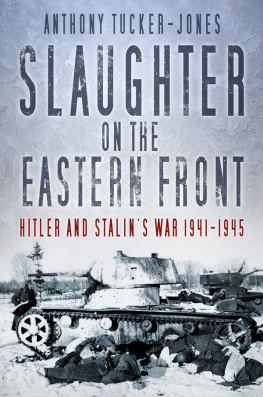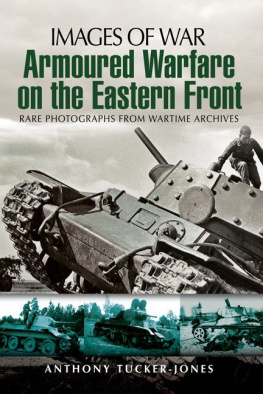Pagebreaks of the print version

Stalins Armour, 19411945
Stalins Armour, 19411945
Soviet Tanks at War
Anthony Tucker-Jones
First published in Great Britain in 2021 by
Pen & Sword Military
An imprint of
Pen & Sword Books Ltd
Yorkshire Philadelphia
Copyright Anthony Tucker-Jones 2021
ISBN 978 1 52677 793 5
ePUB ISBN 978 1 52677 794 2
Mobi ISBN 978 1 52677 795 9
The right of Anthony Tucker-Jones to be identified as Author of this work has been asserted by him in accordance with the Copyright, Designs and Patents Act 1988.
A CIP catalogue record for this book is available from the British Library.
All rights reserved. No part of this book may be reproduced or transmitted in any form or by any means, electronic or mechanical including photocopying, recording or by any information storage and retrieval system, without permission from the Publisher in writing.
Pen & Sword Books Limited incorporates the imprints of Atlas, Archaeology, Aviation, Discovery, Family History, Fiction, History, Maritime, Military, Military Classics, Politics, Select, Transport, True Crime, Air World, Frontline Publishing, Leo Cooper, Remember When, Seaforth Publishing, The Praetorian Press, Wharncliffe Local History, Wharncliffe Transport, Wharncliffe True Crime and White Owl.
For a complete list of Pen & Sword titles please contact
PEN & SWORD BOOKS LIMITED
47 Church Street, Barnsley, South Yorkshire, S70 2AS, England
E-mail:
Website: www.pen-and-sword.co.uk
Or
PEN AND SWORD BOOKS
1950 Lawrence Rd, Havertown, PA 19083, USA
E-mail:
Website: www.penandswordbooks.com
Contents
List of Illustrations
In 1941 Soviet dictator Joseph Stalin had the largest tank fleet in the world, but he and his generals did not know how to deploy it effectively. (All images sourced by author)
Georgi Zhukov, future Hero of the Soviet Union, gained valuable experience in tank combat fighting the Japanese in 1939 and ended up Stalins deputy commander.
Konstantin Rokossovsky started the war as a mechanized corps commander and went on to take part in all the major battles on the Eastern Front, including Moscow, Stalingrad, Kursk and Operation Bagration.
The T-34/76 medium tank first came off the Kharkov factory production line in January 1940. The Model 1940 (T-34/76A) is identifiable by the low-slung barrel of the 76.2mm L-11 anti-tank gun, below a distinctive bulge in the mantlet housing the recoil mechanism.
Similarly, the KV-1 heavy tank had first gone into production in February 1940 at Leningrads Kirov works and was available only in limited numbers.
The first production version of the KV-1 was designated the Model 1939. It is easily recognizable by the rounded recuperator above the 76.2mm L-11 tank gun barrel. The Model 1940 T-34 had a similar arrangement.
Model 1940 KV-1 uparmoured with 35mm plates which were bolted on. The Germans dubbed this version the KV-1E.
Abandoned KV-1 with added turret applique armour.
German soldiers examine the remains of a KV-1. It has the uparmoured turret which has done nothing to save the tank from destruction.
The KV-2 with its enormous turret housing the 152mm M1938/40 howitzer. This could not be traversed unless the tank was on level ground, which severely restricted its ability to fight off-road.
It is not clear if this KV-2 was in a hull-down position to guard an airfield, or whether it simply sank under its own weight.
Horse-drawn German baggage wagons pass a KV-2 left on the roadside.
Two KV-2s left derelict on the road by their unit. The nearest has I Kompanie scrawled on the side of the turret, the victors having already laid claim to it.
This side view shows an impact hole between the first and second return rollers. It was this that severed the track. The gun suffered damage as it has been holed.
This KV-2 put up a fight before succumbing. Three impact marks can be seen just to the right of the hull machine gun and on the right-hand side of the main gun mantlet.
The bulk of the Soviet fast tanks consisted of the BT-5s uparmoured successor the BT-7, seen here with the newer conical turret, which went into production in 1935.
Overturned BT-7 Model 1935 with the rounded hull nose and early cylindrical T-26-style turret.
One of hundreds, if not thousands, of BT drivers who died with their machines.
German troops examine captured BT-7s caught in an ambush.
BT-7 fast tanks abandoned at the roadside. Up to 5,000 of these were built at the Kharkov Locomotive Factory along with the T-34 medium tank.
The single-turret T-26B light tank appeared in 1933 (the earlier T-26 had twin turrets) and was armed with a 45mm or 37mm gun. Its low speed and poor mobility compared to the BT-5 resulted in production being abandoned in the mid-1930s.
The T-26 was obsolete even in 1940; while its 45mm gun could destroy all German armoured vehicles except the Panzer IV, it suffered from common problems amongst Russian tanks mechanical unreliability and thin armour.
A disabled Soviet T-26 tank with the sloped turret. The one in the background is fitted with the earlier cylindrical version.
The crew of this T-26 Model 1933 never managed to escape.
25 Knocked-out Soviet T-26.
A decapitated T-26. Around 2,000 Model 1938/39s were built.
T-26s destroyed defending the road to Moscow.
Another disabled T-26 with one of its crew.
The cumbersome-looking T-28 went in production by 1932, fitted with three turrets, one mounting a 76.2mm gun and two with machine guns. It was one of the worlds very first medium tanks.
Abandoned T-28B Model 1938 medium tank bearing the skull and crossbones.
The massive T-35 heavy tank weighing 45 tons, which appeared a year after the T-28, was a similar beast but only about sixty were ever built.
A slightly later T-35A Model 1938 fitted with the horseshoe radio antenna. Although an impressive-looking monster with a maximum armour thickness of 30mm and a minimum of 10mm, it could be pierced by most anti-tank guns.
A German cyclist passes a T-35 left on the road.
From the mud splattered up the side of this T-35 it managed to travel some distance before breaking down.
The T-20 Komsomolets armoured artillery tractor was designed in 1936 at the Ordzhonikidze Moscow Plant No. 37.
The T-20 was unsuitable as a weapons or troop carrier. Nonetheless, it was used offensively with predictably fatal results.
German officers and NCOs take a good look at an abandoned T-34/76B or Model 1941.
This BT-7 came off worst during an engagement defending Moscow and is being looted for souvenirs or warm clothing.
This T-34 has been blown over onto its turret.
T-34 Model 1943s being mass produced. These are readily identifiable by the hexagonal and flat fronted turret with twin hatches.

